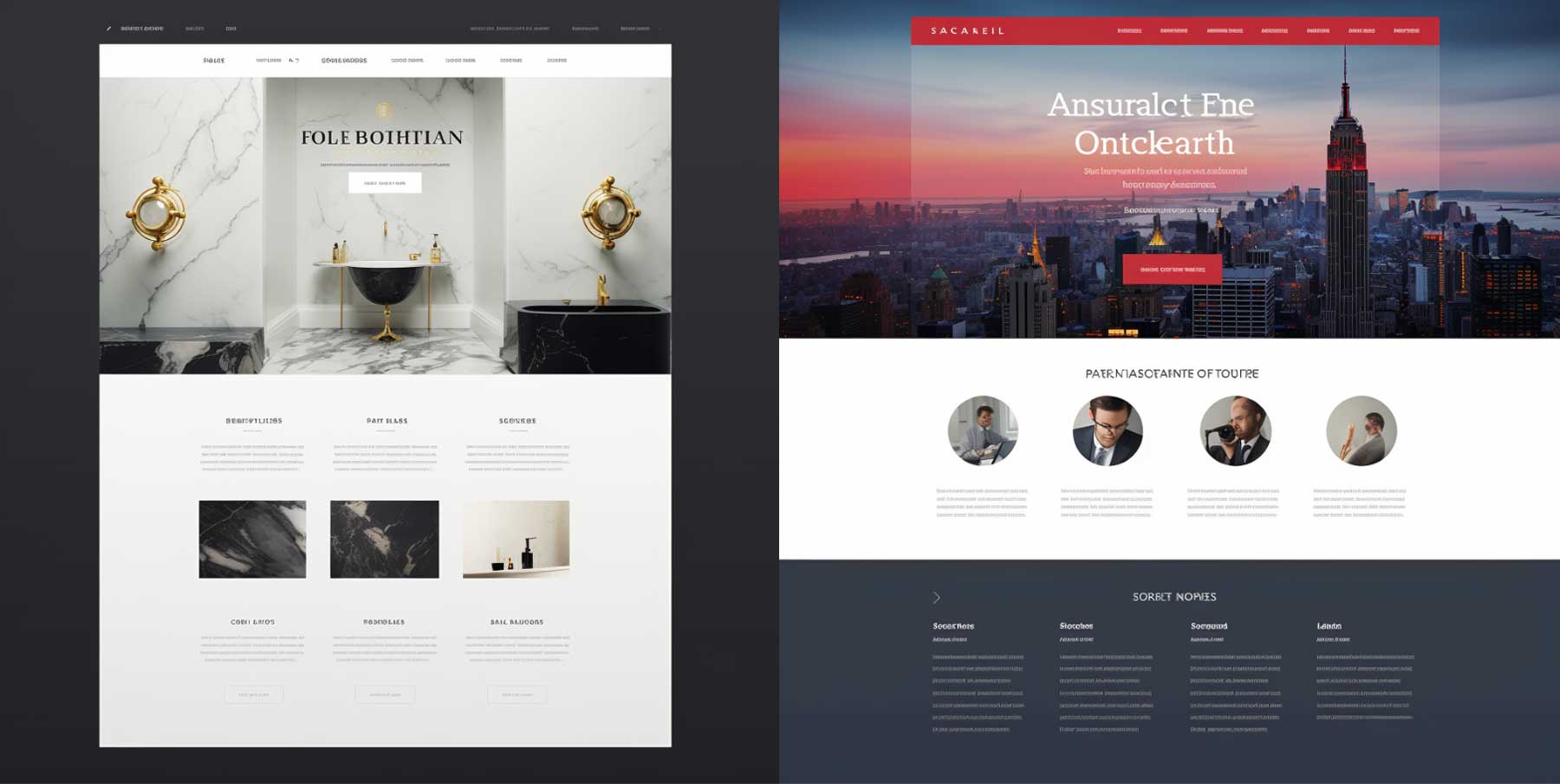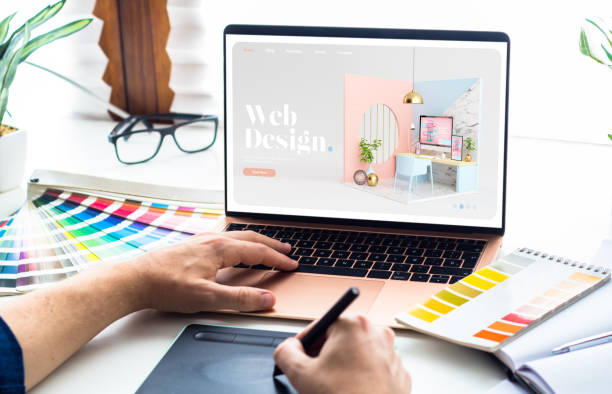The Role of Website Design in Enhancing Brand Identity and Recognition
The Role of Website Design in Enhancing Brand Identity and Recognition
Blog Article
Modern Site Design That Records Focus and Converts
In an increasingly electronic landscape, modern-day website style has actually arised as an essential consider recording individual attention and driving conversions. By tactically employing aesthetic pecking order, receptive designs, and involving interactive aspects, developers can produce experiences that not just draw in site visitors but additionally help with purposeful interactions. Efficient call-to-action approaches play an important duty in directing customers toward wanted outcomes. As we check out these essential elements, it becomes clear that comprehending their interaction can considerably influence a site's efficiency and user contentment. What are the crucial elements that truly make a difference?
Value of Visual Pecking Order
Aesthetic pecking order is a vital aspect in website style, as it guides users' focus and enhances their total experience. By purposefully arranging content, designers can guide users to the most vital information first, thus increasing interaction and improving functionality.
Including a sensible circulation in material setup is vital; as an example, placing one of the most critical information on top of a web page fosters immediate acknowledgment. Regular usage of typography, such as varying font sizes and styles, aids develop a clear content structure. This organization not just help in navigation however additionally develops depend on, as customers feel a lot more comfy when they can easily discover what they are looking for.
Eventually, a well-executed aesthetic pecking order not only improves visual appeal but likewise dramatically impacts individual behavior. By focusing on crucial elements and making sure a seamless experience, designers can properly convert site visitors right into customers, strengthening the value of this foundational layout principle in contemporary internet site growth.
Responsive Layout for All Tools
Developing a seamless experience across numerous tools is essential in today's electronic landscape, where customers gain access to web sites from smart devices, desktop computers, and tablets alike. Receptive layout is a crucial approach that ensures websites adjust fluidly to different screen resolutions, dimensions, and positionings. By utilizing flexible grids, photos, and CSS media inquiries, designers can produce layouts that keep visual honesty and performance, no matter the tool being utilized.
The relevance of receptive design prolongs beyond looks; it directly affects user involvement and conversion prices. A website that functions well on all tools encourages longer sees and minimizes bounce prices, as customers are much more likely to communicate with web content that is very easy to browse. Moreover, search engines, particularly Google, focus on mobile-friendly sites in their positions, making responsive layout a vital component of seo (SEARCH ENGINE OPTIMIZATION)
Including receptive style not only improves customer experience but also improves the advancement process. By creating a single website that functions throughout tools, organizations can save time and resources compared to creating separate mobile and desktop computer variations. Inevitably, receptive style is a fundamental strategy for modern internet site design, making sure ease of access and satisfaction for all users, despite their tool.
Involving Interactive Components
While a receptive layout prepares for a useful internet site, including interesting interactive components is critical for recording customer interest and promoting deeper connections. Website Design. Interactive elements, such as computer animations, tests, and clickable infographics, produce a much more dynamic user experience, urging site visitors to invest even more time on the site
Integrating interactive attributes can additionally direct users through complex details, making it easier to absorb web content. Interactive sliders can show product variants, while embedded video clips can supply demonstrations or testimonials that reverberate even more than static images or message. Gamification techniques, like benefits for involving or completing jobs with content, can boost individual inspiration and retention.
Effective use of interactive elements not only improves the customer experience however can additionally lead to greater conversion prices. It is vital to balance interactivity with efficiency; extremely intricate attributes might prevent site rate, adversely impacting individual fulfillment.
Structured Navigation Practices
Efficient navigation is a cornerstone of any successful website, as it directly affects customer experience and web content accessibility. Streamlined navigating practices guarantee that users can easily situate details, boosting their communication with the website. A well-structured navigation menu should be intuitive and simple, generally featuring a limited variety of main classifications to prevent overwhelming visitors.
To achieve structured navigating, designers must prioritize a hierarchical structure that practically arranges material. Executing breadcrumb tracks can supply customers with context concerning their present location within the site, permitting seamless backtracking. Additionally, using drop-down menus can properly save room while still supplying accessibility to subcategories.
Responsive layout is critical, as navigating should be practical across all devices (Website Design). Mobile individuals, specifically, gain from touch-friendly menus and retractable sections that keep usability without endangering aesthetics

Efficient Call-to-Action Approaches
A well-crafted call-to-action (CTA) is necessary for directing users toward wanted end results on a web site, as it motivates them to involve with content or make an acquisition. To optimize their efficiency, CTAs should be clear, engaging, and strategically put throughout the website.
First, utilize additional reading action-oriented language that communicates necessity or value, such as "Obtain Started," "Sign up with Now," or "Case Your Discount rate." This language not just motivates customers but additionally sets clear assumptions about the following steps.
Second, consider design aspects; CTAs need to stand out aesthetically via contrasting colors, adequate whitespace, and noticeable positioning. A button that is easy to see and click boosts the chance of user interaction.
Furthermore, individualizing CTAs based his response upon user behavior or demographics can substantially boost involvement. Tailored messages resonate more with individuals, driving greater conversion prices.

Conclusion
Finally, modern internet site design stresses the combination of aesthetic pecking order, receptive layouts, engaging interactive components, streamlined navigating, and effective call-to-action techniques. These elements jointly enhance customer experience, making certain that visitors continue to be involved and motivated to explore material even more. By focusing on these layout concepts, companies can dramatically boost customer retention and conversion rates, ultimately leading to greater success in the electronic landscape. The continual advancement of website design highlights its vital function in reliable online communication and advertising and marketing.
In a progressively click this site electronic landscape, modern site style has actually arised as a pivotal variable in catching customer focus and driving conversions.Aesthetic hierarchy is a vital component in web site style, as it guides individuals' attention and enhances their overall experience.The value of responsive layout extends beyond visual appeals; it directly affects user involvement and conversion prices.Incorporating receptive layout not just improves customer experience yet likewise streamlines the development procedure. Inevitably, responsive design is a basic technique for modern website layout, making certain accessibility and satisfaction for all customers, regardless of their tool.
Report this page